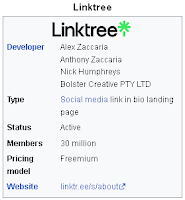| Angle Name | Alternate name | Definition | Concept |
|---|---|---|---|
| Acute | n/a | An angle that measures less than 90 degrees. | basic type |
| Full | Full Rotation | An angle that measures exactly 360 degrees. | basic type |
| Obtuse | n/a | An angle that measures more than 90 degrees but less than 180 degrees. | basic type |
| Reflex | n/a | An angle that measures more than 180 degrees but less than 360 degrees. | basic type |
| Right | n/a | An angle that measures exactly 90 degrees. | basic type |
| Straight | n/a | An angle that measures exactly 180 degrees. | basic type |
| Zero | n/a | The two rays of the angle make zero degrees inclination with respect to each other | basic type |
| Adjacent | n/a | Two angles that share a common vertex and a common ray but do not overlap. | group |
| Alternate | n/a | Pairs of angles formed when a transversal intersects two lines. They are on opposite sides of the transversal and are congruent. | group |
| Alternate Exterior | n/a | Pairs of angles formed when a transversal intersects two lines. They are on opposite sides of the transversal and outside the pair of lines. | group |
| Alternate Interior | n/a | Pairs of angles formed when a transversal intersects two lines. They are on opposite sides of the transversal and inside the pair of lines. | group |
| Congruent | n/a | Angles that have the same measure. | group |
| Consecutive Exterior | n/a | Pairs of angles formed when a transversal intersects two lines. They are on the same side of the transversal and outside the pair of lines. | group |
| Consecutive Interior | n/a | Pairs of angles formed when a transversal intersects two lines. They are on the same side of the transversal and inside the pair of lines. | group |
| Corresponding | n/a | Pairs of angles formed when a transversal intersects two lines. They are on the same side of the transversal and in corresponding positions. | group |
| Non-adjacent Complementary | n/a | Either of two non-adjecent angles whose sum is 90 degrees. | group |
| Non-adjacent Explementary | Conjugate | Either of two non-adjecent angles whose sum is 360 degrees. | group |
| Non-adjacent Supplementary | n/a | Either of two non-adjacent angles whose sum is 180 degrees. | group |
| Central | n/a | An angle whose vertex is at the center of a circle. | position |
| Inscribed | n/a | An angle formed by two chords in a circle with its vertex on the circle. | position |
| Related | n/a | A general term used for pairs of angles with a common vertex, which can include various angle relationships. | position |
| Adjacent Complementary | n/a | Either of two adjecent angles whose sum is 90 degrees. | related |
| Adjacent Explementary | n/a | Either of two adjecent angles whose sum is 360 degrees. | related |
| Adjacent Supplementary | Linear Pair | Either of two adjecent supplementary angles. | related |
| Vertically Opposite | Vertical | A pair of non-adjacent angles formed by the intersection of two straight lines and are opposite to each other. They have equal measures and will never form a linear pair. | related |
| Concave | n/a | An angle with some of its interior points outside the polygon it forms. | shape |
| Convex | n/a | An angle with all its interior points inside the polygon it forms. | shape |
| Dihedral | n/a | The angle between two intersecting planes. | shape |
| Exterior | n/a | An angle formed by one side of a polygon and the extension of an adjacent side. | shape |
| Exterior Right | n/a | An angle formed by an extended side of a polygon and an adjacent side at a right angle. | shape |
| Interior | n/a | Angles formed within the boundary of a polygon. | shape |
| Reflex Interior | n/a | An angle greater than 180 degrees within a polygon. | shape |
| Spherical | n/a | An angle formed by two intersecting great circles on a sphere. | shape |
The last time I mentioned geometry on this blog was back in 2007. It's a story about how I solved an "impossible" geometry problem on a technicality.




















